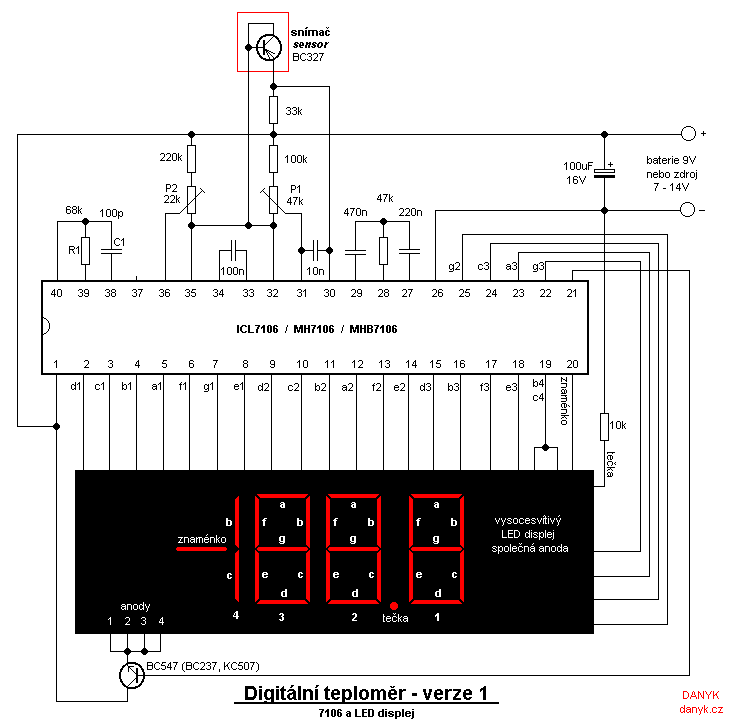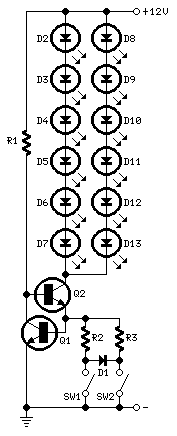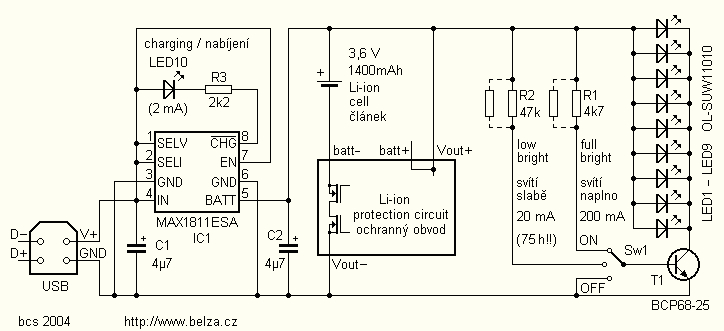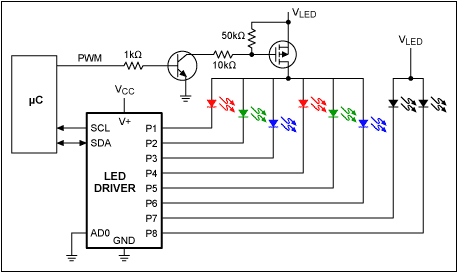
bikelab report 2 the sun lab and led taillights
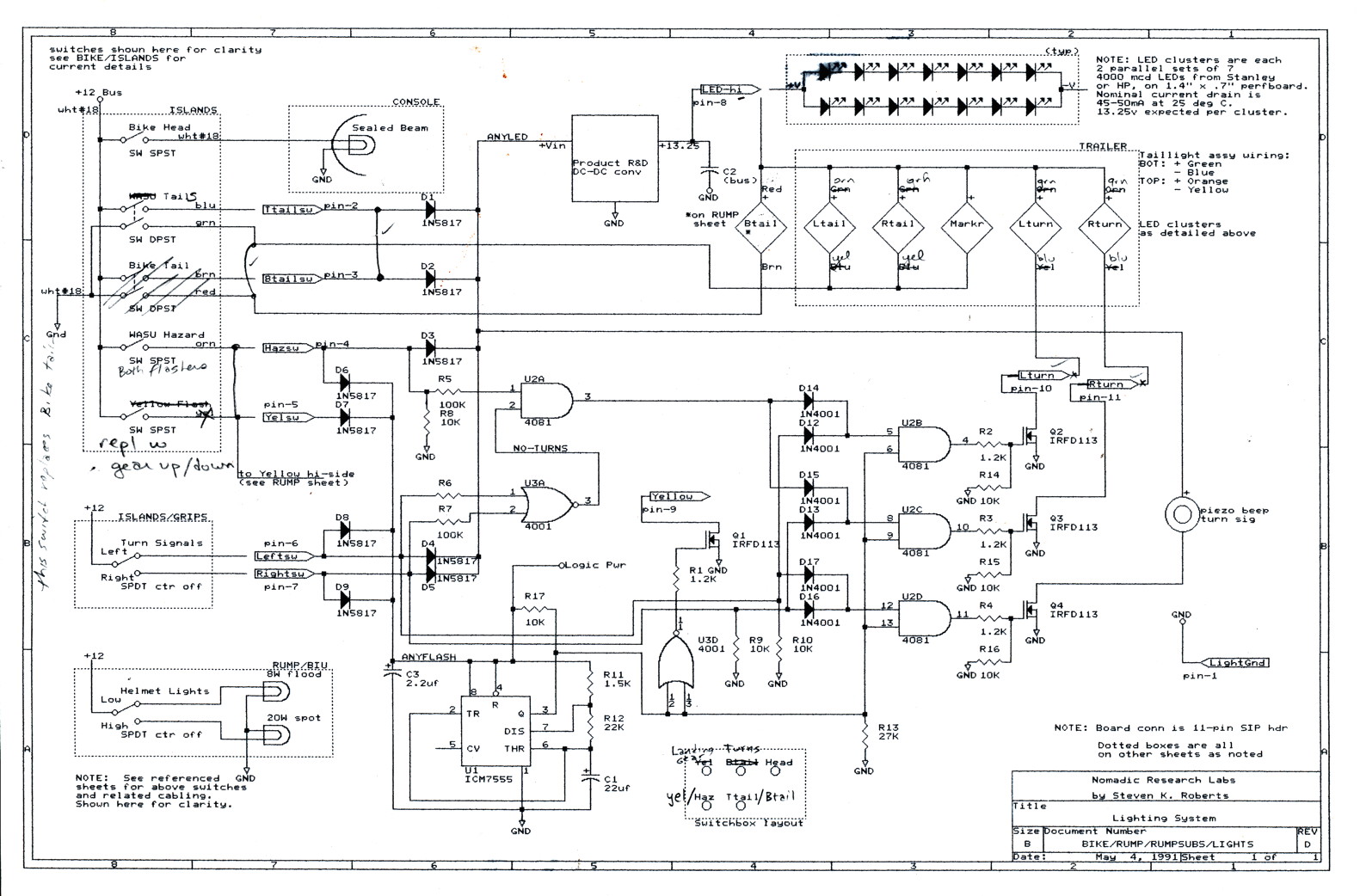
This second issue of the Bikelab Notes, published during the development of BEHEMOTH at Sun Microsystems, focuses on high-brightness LED taillight assemblies that were not commercially available at the time, making this a unique project. The author also comments on the excellent facilities at Sun and addresses several reader inquiries. The project is characterized by collaboration among various individuals who visited the lab to volunteer, observe, or brainstorm. The response to the Bikelab reports has been substantial, with 367 individuals engaging with the announcement. The author reflects on the significance of the Grand Turing Machine project, highlighting the hacker ethic that promotes cooperation and the free exchange of information to create superior tools without legal constraints. There is an acknowledgment of the importance of protecting corporate sponsors' intellectual property while sharing design concepts broadly. The column will include specific reader comments, encouraging focused questions to maximize publication chances. A reader inquires about sources for recumbent bicycles due to discomfort with standard bicycles, expressing interest in constructing a simpler version of the author's bike. Additionally, the reader mentions a newly unveiled product from Telebit, an IP router that establishes network links via on-demand dial-up, allowing for seamless communication with the bike. This innovation is seen as transformative for data communication from the bike, making traditional methods less appealing.
The schematic for the high-brightness LED taillight assemblies can be designed to meet specific requirements for brightness, power efficiency, and durability. The circuit will typically include a power supply section, LED driver, and the LED array itself.
The power supply section can be designed to accept a wide range of input voltages, allowing for flexibility in different battery configurations. A buck or boost converter may be employed to ensure the LEDs receive a consistent voltage, optimizing their performance and longevity.
The LED driver circuit will be responsible for regulating the current flowing through the LED array. This can be accomplished using a constant current source, which ensures that the LEDs operate at their rated current regardless of variations in input voltage. The driver may also include PWM (Pulse Width Modulation) control to enable brightness adjustment, allowing for different lighting modes or responses to environmental conditions.
The LED array can consist of multiple high-brightness LEDs arranged in series or parallel configurations, depending on the desired output and design constraints. Resistors may be used in conjunction with the LED array to limit current and protect the LEDs from overcurrent conditions.
Additional components such as capacitors may be included for filtering to reduce noise and ensure stable operation. A microcontroller could also be integrated into the design to manage the LED operation, including features such as flashing patterns or automatic brightness adjustment based on ambient light conditions.
Overall, the circuit design for the high-brightness LED taillight assemblies will prioritize efficiency, reliability, and user-friendly features, making it suitable for various applications, including the innovative projects being developed in the Bikelab.This second issue of the Bikelab Notes, published during my time building BEHEMOTH at Sun Microsystems, focuses on the high-brightness LED taillight assemblies. These were not commercially available at the time, so this was a hack. I also commented on the wonderful facilities that Sun provided and answered a few reader questions. This was an exqui site phase of the project, surrounded daily by interesting people who came by the lab to volunteer, observe, or share a bit of brainstorming. Well, this has certainly struck a chord! As of this writing, 367 people have responded to the announcement of reports from the bikelab. This is gratifying, and a little scary: now my blithe prediction of weekly publication has to be taken a little more seriously.
You know, there is something subtle about this whole Grand Turing Machine project that I am just now beginning to appreciate. I touched on it in Issue #1 (where I commented that I am just project coordinator for the REAL wizardry that must be credited to industry), and it was brought into sharp focus by an article in the Oct 1 issue of EDN about Richard Stallman of the Free Software Foundation.
It spoke of the hacker ethic, which encourages cooperation and free sharing of information with the general intent of building the best tools possible, unhampered by legal constraints. I believe in this, but I`ve also seen the awesome power of competition. It therefore seems that the best stance for me to take in publications about BEHEMOTH is to protect the intellectual property of my corporate sponsors, but otherwise disseminate the concepts and design details as widely as possible ” either for free, or in value-added form via theprint edition of Nomadness .
Industry has made this enterprise possible by contributing ideas ” and it`s only fair for me to complete the cycle, so to speak, by freely sharing information in return. This regular column will present a few specific reader comments in each issue. To maximize your chances of getting a letter published, please make your questions well-focused (I`ve had some that require about 10K of text for a cogent answer).
I do edit for clarity and brevity Last time I spoke with you, I enquired about sources for recumbent bikes. I find the riding position on standard safety bicycles too uncomfortable (I have a neck and back malady that causes problems with the head-up riding position).
I would like to construct a smaller version of your bike without all the features you carry. I would probably limit it to a single processor, cellular phone, and two meters. There has to be a way for those of us without millions of $$$ to accomplish some of the same things that you have. One other item: the product that we (Telebit) have recently unveiled will be of interest to you. It is an IP router that establishes its link with the network using on-demand dial-up links. Imagine that someone in the Internet needs to establish a session with your bike (mail, transfer a file, etc.
). They simply route the packet to one of our NetBlazers and it calls your bike via cellular phone. Likewise you can initiate the connection via CellBlazer from your bike. Imagine having your built-in SPARCstation on the Sun network wherever you go but having the phone connection active ONLY when there is traffic going back and forth. Wow! I want one. I`m rapidly getting addicted to the Big Network these are some pretty powerful tools. They are changing my expectations about how datacomm from the bike should work: stopping at the occasional pay phone and plugging in the cups no longer seems particularly appealing.
The product you describe sounds like pure magic, and the ideal solution for this nomadic application. Where do I sign (NOTE to readers: We have since spoken and this looks like it will indeed happen watch future issues for details.
) As to the recumbent, a good approach is to contact Dick Ryan about 🔗 External reference
The schematic for the high-brightness LED taillight assemblies can be designed to meet specific requirements for brightness, power efficiency, and durability. The circuit will typically include a power supply section, LED driver, and the LED array itself.
The power supply section can be designed to accept a wide range of input voltages, allowing for flexibility in different battery configurations. A buck or boost converter may be employed to ensure the LEDs receive a consistent voltage, optimizing their performance and longevity.
The LED driver circuit will be responsible for regulating the current flowing through the LED array. This can be accomplished using a constant current source, which ensures that the LEDs operate at their rated current regardless of variations in input voltage. The driver may also include PWM (Pulse Width Modulation) control to enable brightness adjustment, allowing for different lighting modes or responses to environmental conditions.
The LED array can consist of multiple high-brightness LEDs arranged in series or parallel configurations, depending on the desired output and design constraints. Resistors may be used in conjunction with the LED array to limit current and protect the LEDs from overcurrent conditions.
Additional components such as capacitors may be included for filtering to reduce noise and ensure stable operation. A microcontroller could also be integrated into the design to manage the LED operation, including features such as flashing patterns or automatic brightness adjustment based on ambient light conditions.
Overall, the circuit design for the high-brightness LED taillight assemblies will prioritize efficiency, reliability, and user-friendly features, making it suitable for various applications, including the innovative projects being developed in the Bikelab.This second issue of the Bikelab Notes, published during my time building BEHEMOTH at Sun Microsystems, focuses on the high-brightness LED taillight assemblies. These were not commercially available at the time, so this was a hack. I also commented on the wonderful facilities that Sun provided and answered a few reader questions. This was an exqui site phase of the project, surrounded daily by interesting people who came by the lab to volunteer, observe, or share a bit of brainstorming. Well, this has certainly struck a chord! As of this writing, 367 people have responded to the announcement of reports from the bikelab. This is gratifying, and a little scary: now my blithe prediction of weekly publication has to be taken a little more seriously.
It spoke of the hacker ethic, which encourages cooperation and free sharing of information with the general intent of building the best tools possible, unhampered by legal constraints. I believe in this, but I`ve also seen the awesome power of competition. It therefore seems that the best stance for me to take in publications about BEHEMOTH is to protect the intellectual property of my corporate sponsors, but otherwise disseminate the concepts and design details as widely as possible ” either for free, or in value-added form via the
Industry has made this enterprise possible by contributing ideas ” and it`s only fair for me to complete the cycle, so to speak, by freely sharing information in return. This regular column will present a few specific reader comments in each issue. To maximize your chances of getting a letter published, please make your questions well-focused (I`ve had some that require about 10K of text for a cogent answer).
I do edit for clarity and brevity Last time I spoke with you, I enquired about sources for recumbent bikes. I find the riding position on standard safety bicycles too uncomfortable (I have a neck and back malady that causes problems with the head-up riding position).
I would like to construct a smaller version of your bike without all the features you carry. I would probably limit it to a single processor, cellular phone, and two meters. There has to be a way for those of us without millions of $$$ to accomplish some of the same things that you have. One other item: the product that we (Telebit) have recently unveiled will be of interest to you. It is an IP router that establishes its link with the network using on-demand dial-up links. Imagine that someone in the Internet needs to establish a session with your bike (mail, transfer a file, etc.
). They simply route the packet to one of our NetBlazers and it calls your bike via cellular phone. Likewise you can initiate the connection via CellBlazer from your bike. Imagine having your built-in SPARCstation on the Sun network wherever you go but having the phone connection active ONLY when there is traffic going back and forth. Wow! I want one. I`m rapidly getting addicted to the Big Network these are some pretty powerful tools. They are changing my expectations about how datacomm from the bike should work: stopping at the occasional pay phone and plugging in the cups no longer seems particularly appealing.
The product you describe sounds like pure magic, and the ideal solution for this nomadic application. Where do I sign (NOTE to readers: We have since spoken and this looks like it will indeed happen watch future issues for details.
) As to the recumbent, a good approach is to contact Dick Ryan about 🔗 External reference
